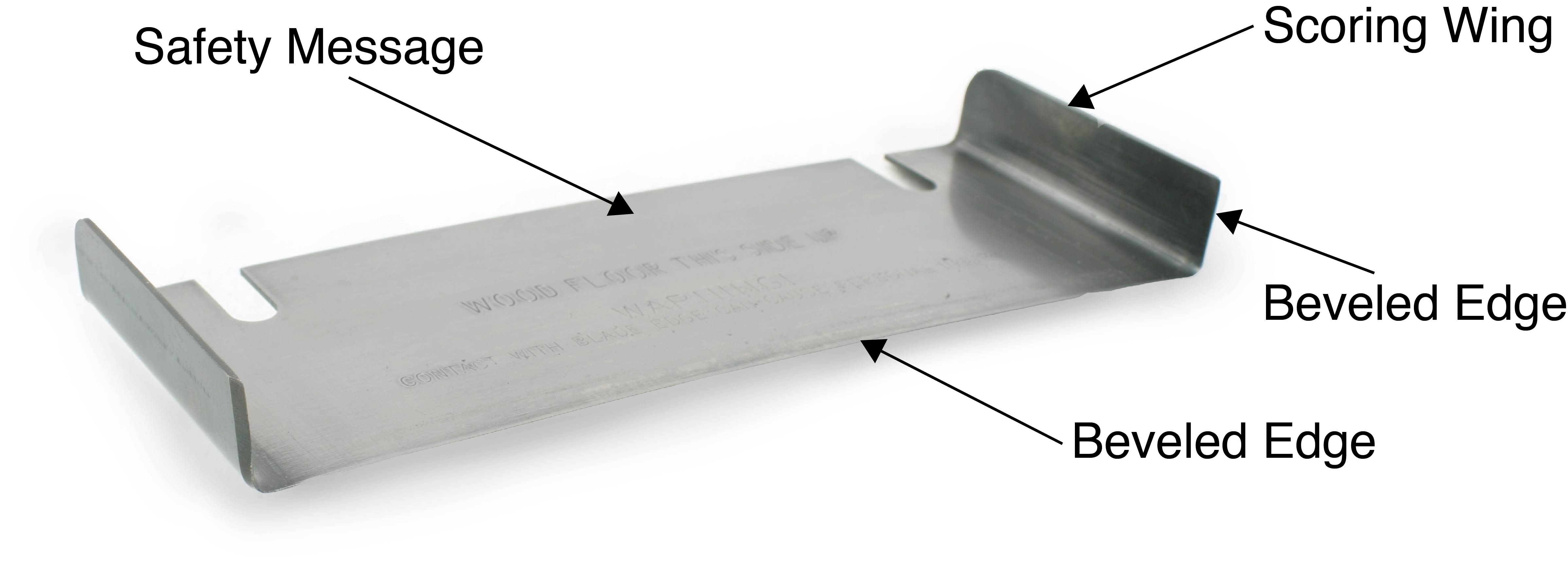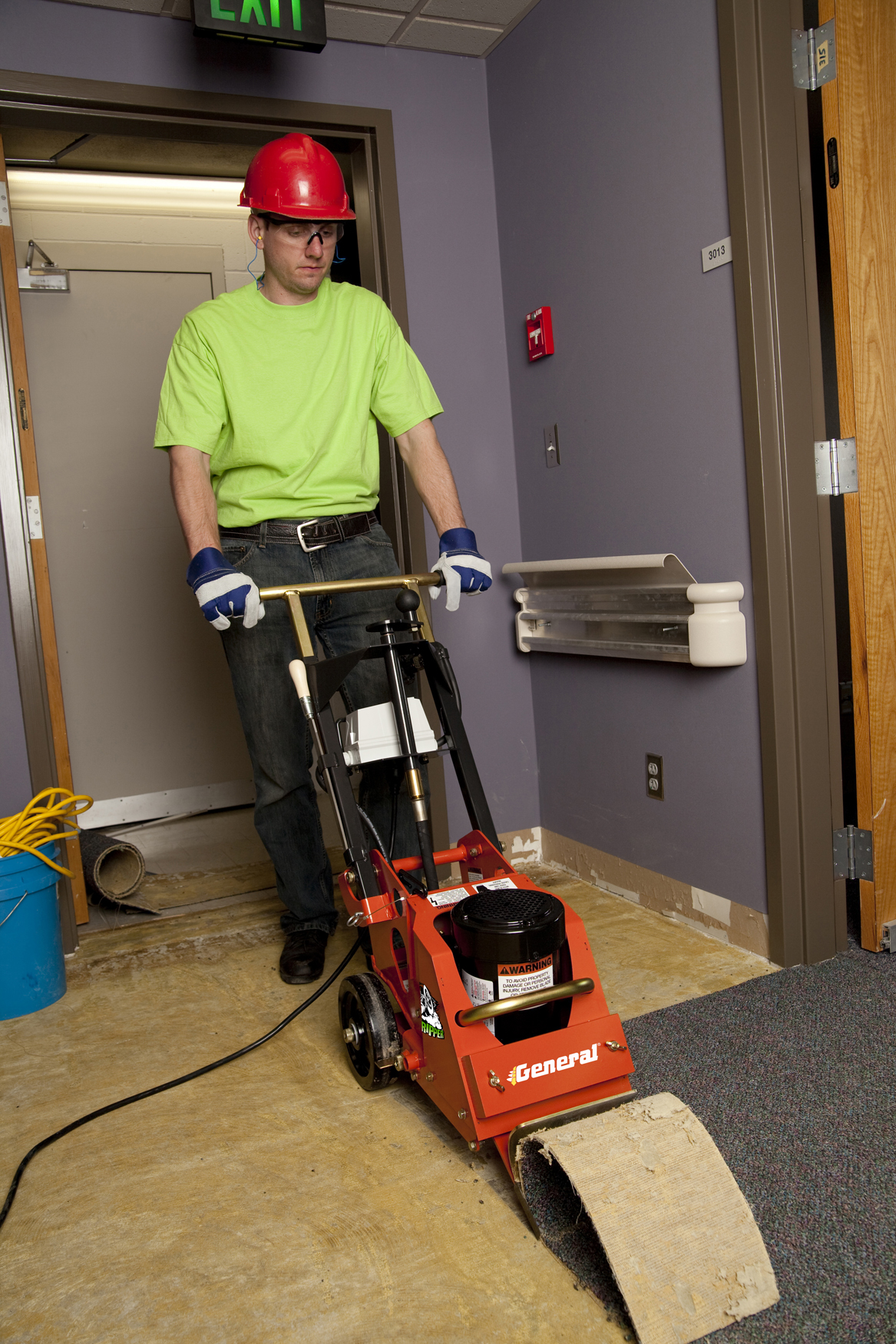What Type of Tile Stripper Blade do I use to Remove Glued or Mastic?
Using the proper blade when operating a General FCS Series RIP-R-STRIPPER (or similar machine) to remove glue or mastic residue will make all the difference between success and failure for your product.
People usually attempt to remove these and similar materials utilizing the more readily available, flat-type blades. Many times, with very disappointing results.
The proper blade for removing mastics or adhesive residue is the mastic removal type:
- Incorporates an additional bend that positions the cutting edge in a more vertical angle relative to the surface.
- Angle is critical for producing the proper scraping action remove residue.
- Use is limited to concrete floors.
- Use on wood or many underlayments will produce an uneven scraping action, including severe gouging and damage.
- Use on wood will significantly reduce machine control.
- The extra blade thickness better resists flexing to also help maximize the amount of residue removed.

Need help?
Call us at 800.533.0524, or
email: support@generalequip.com.

Scoring blades are available in a variety of cutting widths.
If you have any questions or comments, please feel free to contact us.
Telephone: 800.533.0524 | Email: support@generalequip.com



